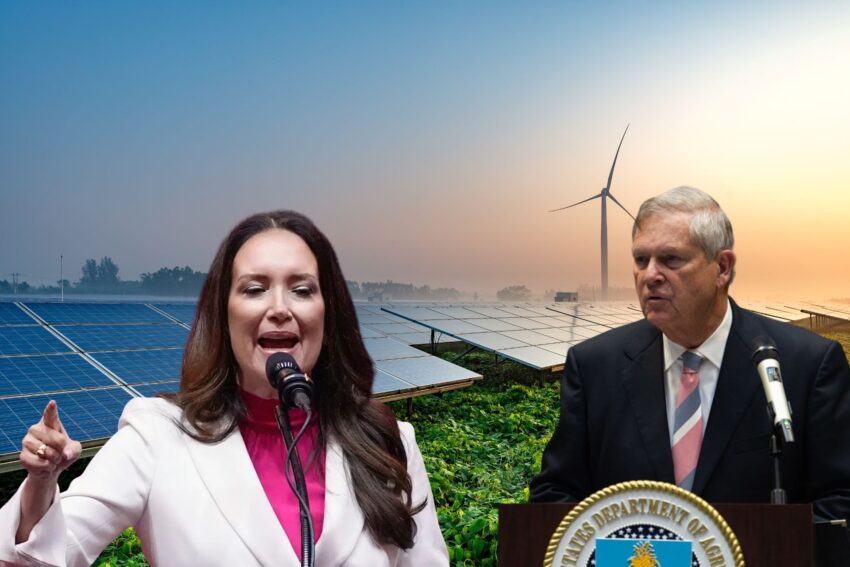Washington, D.C. – The appointment of Brooke Rollins as the U.S. Secretary of Agriculture under President Donald Trump has sparked discussions across the agricultural sector about potential shifts in policy direction. With a background deeply rooted in conservative politics and a stint as the director of the Domestic Policy Council during Trump’s first term, Rollins brings a different flavor to the Department of Agriculture (USDA) compared to her predecessor, Tom Vilsack. Here, we analyze how her policies might influence the industry, contrasting them with Vilsack’s tenure.
Background and Ideology
Brooke Rollins
Conservative Think Tank Ties: Rollins’s leadership at the America First Policy Institute, a think tank dedicated to advancing Trump’s policy agenda, suggests a lean towards deregulation, market freedom, and traditional agricultural practices.
Agricultural Heritage: Growing up in rural Texas with ties to agricultural organizations like FFA and 4-H, Rollins has personal experience with farming, which might shape her policy approach.
Tom Vilsack
Progressive Agriculture: Vilsack, serving under both Obama and Biden, has been known for his push towards sustainable and climate-smart agriculture, focusing on conservation, renewable energy, and nutritional programs like SNAP.
Rural Development: His tenure emphasized rural development, aiming to rejuvenate small towns through agriculture, broadband expansion, ‘green’ energy, and other infrastructure improvements.
Policy Stances and Impacts
Market Access and Trade
Rollins: Likely to push for renegotiating trade deals to favor U.S. agricultural exports, potentially emphasizing less on environmental compliance but more on reducing trade barriers. Her approach might align with Trump’s previous tariff strategies, aiming to protect domestic producers from perceived unfair trade practices.
Vilsack: Focused on enhancing market access through sustainable practices. He advocated for trade deals that included environmental considerations, like the USMCA, which had sustainability chapters.
Environmental Regulations
Rollins: Given her background, there might be a pushback against stringent environmental regulations that could be seen as burdensome to farmers. This could mean a rollback or reevaluation of climate-smart initiatives unless they show clear economic benefits for farmers.
Vilsack: Championed the integration of climate-friendly practices into agriculture, such as promoting cover crops, reduction of greenhouse gases, and participation in carbon markets. His policies were geared towards making agriculture a key player in battling climate change.
Rural Development and Support
Rollins: Her focus might be on economic empowerment of rural America through direct subsidies or aid, possibly echoing Trump’s previous administration’s approach of providing financial support to farmers affected by trade wars. Rural development under Rollins could prioritize infrastructure and economic policies over environmental ones.
Vilsack: Emphasized comprehensive rural development, linking agriculture with broader rural economic health through programs aimed at renewable energy, broadband access, and community revitalization.
Food and Nutrition Programs
Rollins: While details are sparse, her conservative leanings might lead to a more market-driven approach to food assistance programs, potentially looking at efficiency and cost-saving measures within SNAP and other programs.
Vilsack: Expanded and modernized SNAP, worked on reducing food deserts, and improved nutritional standards in school lunches, focusing on both health and accessibility.
Conclusion: A Shift in Agricultural Policy?
The appointment of Brooke Rollins signals a potential shift back towards policies that prioritize economic vitality and traditional farming practices over sustainability mandates. Her policies could:
Encourage Deregulation: Possibly leading to fewer restrictions on how farms operate, which might be welcomed by many in the industry looking for reduced compliance costs.
Focus on Trade: Emphasize renegotiating trade deals to favor U.S. agricultural products without the environmental stipulations seen in recent agreements.
Direct Support: Continue or enhance direct financial aid to farmers, focusing on immediate economic relief rather than long-term environmental goals.
In contrast, Vilsack’s tenure was marked by a vision to align agriculture with broader environmental and social goals, integrating climate action into farming practices.
The agricultural community now stands at a crossroads, with Rollins’s policies potentially offering more short-term economic benefits to farmers, while Vilsack’s approach aimed at sustainable growth might have been seen as more burdensome by many in he agricultural sector. The impact of these policies will largely depend on how Rollins navigates the complex interplay between economic prosperity, environmental stewardship, and the needs of America’s farming communities.


